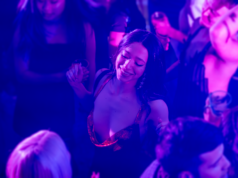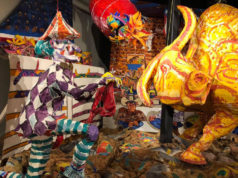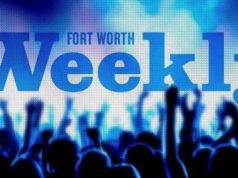From the National Endowment for the Arts comes new study creating a portrait of the artists in the United States, identifying where we live and work and how big (or small) our presence is in the total workforce. The ostensible purpose? Clearly, to be able to point and laugh at the states whose artist populations are really small.
The study, based on U.S. Census Bureau data, indicates that there are nearly 2 million artists in the United States, making up 1.4 percent of the total workforce, 6.9 percent of the professional workforce.
At 39 percent of the artistic workforce, designers, according to the study, comprise the largest segment of artists –– only 17 percent belongs to the second-place group, performing artists (actors, musicians).
The best paid artists are architects, taking home $63,111. In second place are producers and directors ($52,630), followed by *scratches head* writers and authors ($44,792)? (Clearly, I’m in the wrong line of writing and authoring. Time to brush off that YA vampire/werewolf/zombie/mummy novel idea that I haven’t thought about since sixth grade.)
Near the bottom of the pile are musicians (sorry, guys), raking in a meager $27,558, placing them right above dancers and choreographers ($27,392), photographers ($26,875), and “other entertainers” (puppeteers? mimes? drag queens?) ($25,363).
As a percentage of Texas’ labor force, artists make up 0.8 percent, keeping us in line with states such as Pennsylvania, Tennessee, Nebraska, and … Alaska? (Yes. Evidently, “fishing and hunting with wooden implements while wearing animal hides” is considered art in Alaska.) (Haha. Just kidding, Alaska. You probably have steel implements.)
The artiest states? The capital of Western film (and some non-porn), California boasts an artist percentage of 1.5. But the highest percentage, 1.6, belongs to New York, the publishing capital of the world, home of the Great White Way, fashion mecca, and place of beautiful stromboli.
Other high states: You can understand some of their numbers. Oregon’s 1.1 percent can probably be attributed to the number of small presses and indie authors based in Portland. Nevada’s 1.1 percent? Dancers and magicians. But Wisconsin’s and Colorado’s 1.1 percents? I’m gonna be pretty pissed if beer-drinking has become an art and nobody told me.
The least artistic states? (Don’t laugh. OK. Laugh.) Mississippi and West Virginia are at the bottom, with percentages of 0.5 percent. Right above them at 0.6 percent are Alabama, Arkansas, Kentucky, Oklahoma, and Wyoming. Yes, they’re all even lower than such non-traditionally arty states as Idaho (0.7), Montana (1.0!), and the Dakotas (0.7). All of them voted for McCain/What’s-her-face? in the 2008 presidential election. “Compared to other U.S. workers,” the study says, “American artists tend to be better educated … . Artists are twice as likely to have earned a college degree as other members of the U.S. labor force” and tend to shun living in the South, the Appalachians, or the general, barely habitable U.S. hinterlands. (I’m just kidding. The study didn’t say that. But it’s still true.)
Lastly, another oddity of the study: Only 13 percent of writers and authors are non-white and/or Hispanic (compared with 32 percent of the total workforce). However, 27 percent of actors are non-white and/or Hispanic, and 41 percent of all dancers and choreographers are non-white and/or Hispanic. In other words: There are a lot of Jewish writers.
Here’s the executive summary of the study.
34











